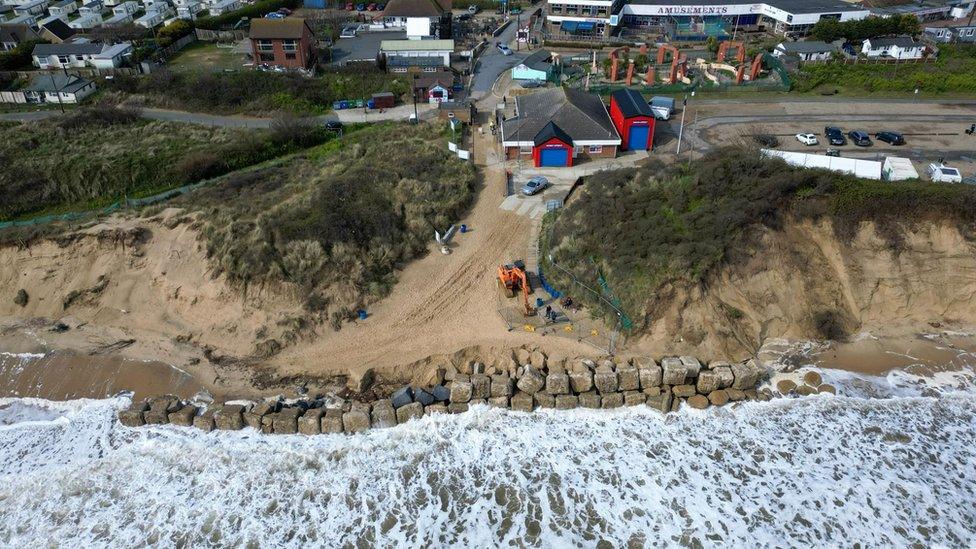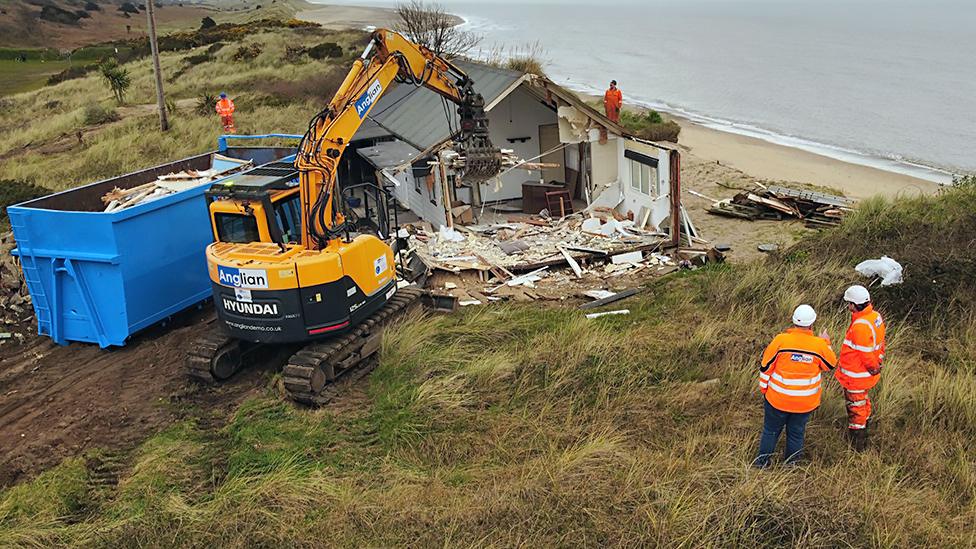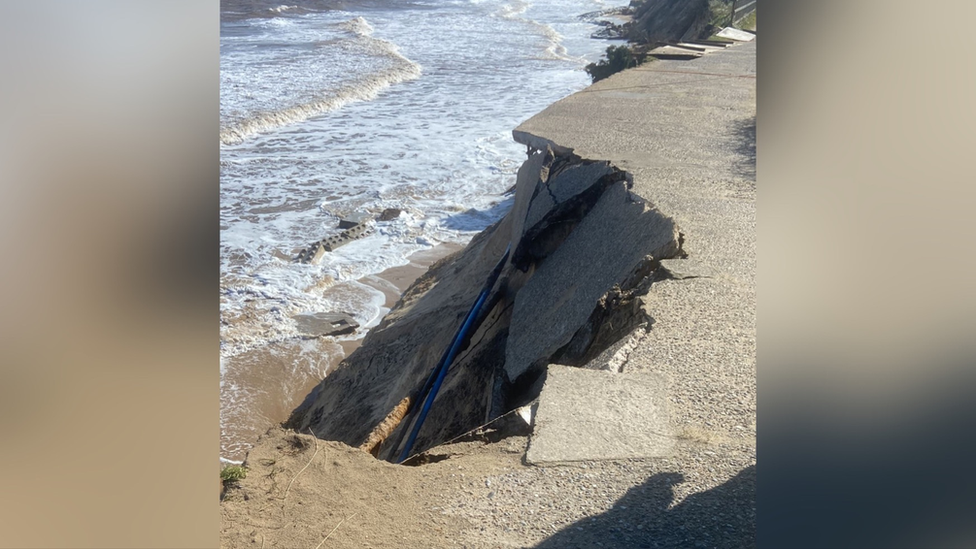Village 'not abandoned' after sea defences scrapped

A home at Hemsby remains close to the cliff edge after further erosion last weekend
At a glance
Great Yarmouth MP Sir Brandon Lewis has denied claims that residents in Hemsby have been abandoned after a flood defence scheme was scrapped
Earlier this week, Mr Lewis, along with local authorities, said Hemsby did not qualify for "sufficient government funding" to allow sea defences to progress
A joint statement said the cost of the project had risen significantly due to inflation
Residents of Hemsby said they now feared more homes would be lost to the sea
- Published
The MP representing a coastal village at risk of further erosion has denied claims that residents were being abandoned after a sea defence scheme was scrapped.
Conservative MP for Great Yarmouth, Sir Brandon Lewis, along with local authorities, said earlier this week that Hemsby in Norfolk did not qualify for "sufficient government funding" to allow sea defences to progress.
It is thought the original proposed £15m needed for the project, which was granted planning permission, had risen to about £20m due to inflation.
Residents of Hemsby said they now feared more homes would be lost to the sea, with storm surges predicted over the coming days.
Hemsby is on a vulnerable stretch of North Sea coastline, where five homes had to be demolished earlier this year due to the risk of further erosion.

People in Hemsby fear storm surges in the coming days could lead to further erosion
Mr Lewis said: "Twenty million pounds is a huge amount of money.
"To put it in context, it is roughly double Great Yarmouth Borough Council’s annual budget, which is the lead authority on this.
"Some of the experts have said that even that £20m scheme doesn't give what some of the Hemsby campaigners want, which is protection and a beach.
"The most effective protection is a sea defence wall, and a sea defence wall means no beach."
In a joint statement on Wednesday, the MP, Lewis, Great Yarmouth Borough Council, Coastal Partnership East and Norfolk County Council, said they had "proactively lobbied over a number of years to argue the case for Hemsby".
It said: "The primary source of funding for the proposed work would be via a Flood Defence Grant-in-Aid (FDGIA) from the government and the amount of funding available depends on the number of assets - mainly residential properties - that would benefit from a reduced risk of erosion once the scheme is completed.
"Currently schemes of this cost and scale would only attract FDGIA where hundreds of homes are at risk."

Great Yarmouth MP Sir Brandon Lewis denies that residents in Hemsby have been abandoned
Planning permission had already been granted for a 0.8-mile (1.3km) concrete berm to try to protect the cliff.
About 2,000 tonnes of granite was also placed along a 262ft (80m) section of cliff at the end of March in an emergency bid to protect the area, at a cost of £735,000.
The authorities said they were now preparing for what "appeared to be the inevitable situation of losing more properties", including a private access road leading down to the beach.

Campaigners put up a banner earlier this week calling on local authorities to take action on the threat of coastal erosion
Over the next two days, forecasters are warning of strong easterly winds and three-metre waves which could cause further erosion.
Last weekend, 6ft (1.8m) of sandy cliff was lost to the sea, leaving another home close to the cliff edge.
A Met Office yellow weather warning, external is in place for much of England.
Mr Lewis added: "I would encourage any resident that has got a property at risk, or they’re concerned that their property is at risk, they should be making contact with Great Yarmouth Borough Council around the support that they can give."
Follow East of England news on Facebook, external, Instagram, external and X, external. Got a story? Email eastofenglandnews@bbc.co.uk, external or WhatsApp us on 0800 169 1830
Related internet links
- Published20 May 2023

- Published17 March 2023

- Published14 March 2023
